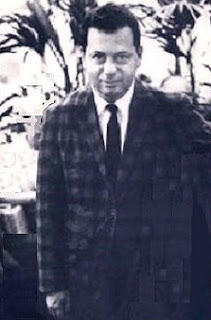Tibor Serly was a Hungarian violinist, violist,
conductor, composer, and teacher born (in Losone, Hungary) on November 25,
1901. He studied with some of the
greatest musicians of the late nineteenth century, including Jeno Hubay and
Zoltan Kodaly. Although he was an
orchestral violinist for many years, he is now mostly remembered as a composer
and the arranger of the Bartok viola concerto.
Serly’s first teacher was his
father who was a composer of theatre works and conductor as well. Interestingly, Serly began his studies in the
U.S. since his family brought him here as a very young child. He played in pit orchestras in New York
(which his father conducted) until he was 21 years old, at which time he
returned to Hungary (in 1922) to study at the Liszt Academy in Budapest. His main teachers there were Jeno Hubay,
Zoltan Kodaly, and Leo Weiner (teacher also of Fritz Reiner, Georg Solti, and
Janos Starker.) Serly graduated from the
academy in 1925. He was 24 years
old. He then returned to the U.S. and
played in the Cincinnati Symphony (as violist from 1926 to 1927 under Fritz
Reiner), in the Philadelphia Orchestra (as violist – one source says violinist
- from 1928 to 1937 under Leopold Stokowski and Eugene Ormandy), and the NBC
Orchestra (as violist from 1937 to 1938 under ill-tempered Arturo
Toscanini.) It has been said that
Stokowski appointed Serly Assistant Conductor of the Philadelphia Orchestra in
1933 – perhaps it is true. (I made an
inquiry of the Philadelphia Orchestra to confirm that but they never
responded.) After 1938, Serly mostly
devoted his time to composition, conducting, and teaching. He was 37 years old. His friendship and professional association
with Bela Bartok began in 1925 (in Hungary) - he met with him sporadically
thereafter. However, Serly was in
regular and frequent contact with Bartok between 1940 and 1944, after Bartok
came to the U.S. Serly completed
Bartok’s viola concerto from many sketches which Bartok didn’t have time to
assemble himself prior to his death. (The
concerto has subsequently been further revised by Bartok’s son Peter Bartok and
violist Paul Neubauer as well as by violist Csaba Erdelyi – every edition is quite
different so that an orchestra must be careful to use the same edition as the
soloist when performing it.) Serly also
completed the last 17 bars of the third piano concerto – some say he merely
orchestrated the last 17 bars of the piece – others say he orchestrated the
entire piece. Serly’s own works are now
very seldom played but he remains an important figure in modern music because
he promoted atonal and other non-traditional ways of putting notes together to
form a whole. He became a professor at
the Manhattan School of Music (New York) but taught at other institutions as
well. Serly was one of many musicians
who became well acquainted with poets and other artists of that period,
including the notorious Ezra Pound and his violinist-lover, Olga Rudge. (Few people know that Ezra Pound was also a
composer. It has been said that Rudge
discovered 300 of Vivaldi’s forgotten concertos in Italy and thus greatly helped
the resurgence in interest in Vivaldi’s music.)
Serly helped Pound organize concerts in Rapallo, Italy, to which he
frequently traveled. As late as 1976,
Serly was still publishing books on music theory which are now not widely
known. He wrote a viola concerto in 1929
and that work is still sometimes played.
He also wrote a violin concerto. His
other works remain quite obscure. He
died after being struck by a vehicle (some sources say it was a car) while
visiting London in 1978. His exact date
of death is October 8, 1978. He was 76
years old.
